Frequently, individuals become enamored with the appeal of an animal and make the decision to keep it as a pet, but this may not always be the best choice for the animal’s well-being. This is a common occurrence with birds in particular, as their unique beauty and captivating nature make them highly sought-after in the exotic pet trade, leading to their capture and sale.

The capture of birds for the pet trade doesn’t only harm the birds but also affects the ecosystem they belong to. A mere 1 in 6 parrots captured from the wild actually survives the process, while other species suffer the same fate. However, there are individuals who focus on breeding and safeguarding endangered bird species. These conservationists release them back into their natural habitats to revive their dwindling populations or introduce them to new environments where they can flourish.
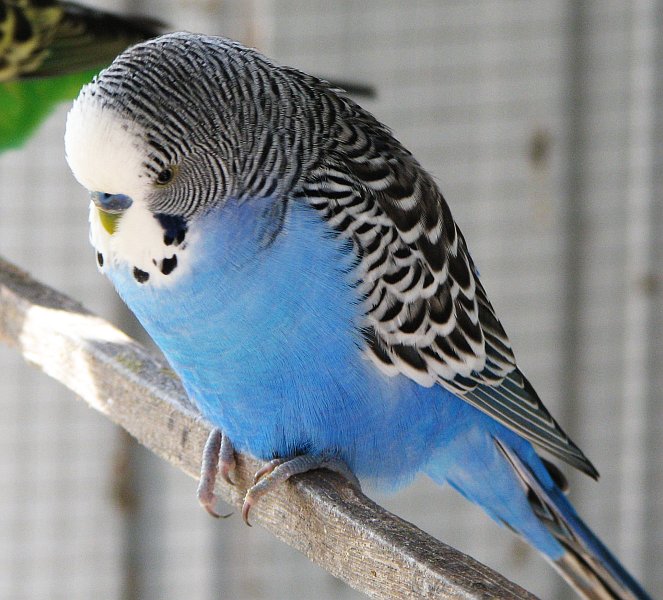
The purple budgerigar mutation is just one of the around 30 mutations that can change the color of a budgerigar. It’s part of the purple variety. When a bird carries the purple factor, it produces a visual effect that depends on the presence of dark and blue mutations and whether the purple factor is single or double. There are 18 different combinations of these three mutations, but only three of them meet the visual purple exhibition standard. Budgerigars, also known as parakeets, are highly popular pet birds because they’re easy to tame and care for. They’re friendly, affectionate, small, and low-maintenance, which makes them perfect for busy pet owners and those who live in small spaces like apartments. Budgies are intelligent birds that can be trained to talk and perform tricks.
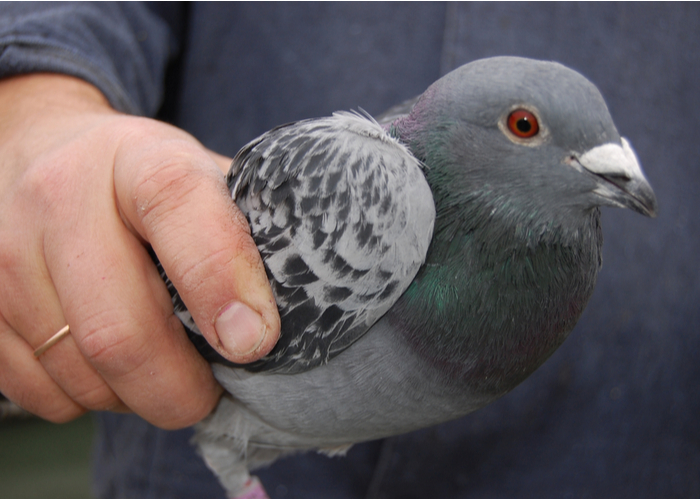
The dove may not be the most obvious choice for a friendly pet bird, but don’t underestimate them – they are docile and affectionate creatures that can be easily trained. Doves are known for their gentle nature and are unlikely to bite or display hostility towards their owners. Unlike other bird species, doves don’t need as much attention from their owners, but they still enjoy some interaction and affection. Overall, if you’re looking for a low-maintenance pet bird with a sweet personality, a dove may be the perfect fit for you.
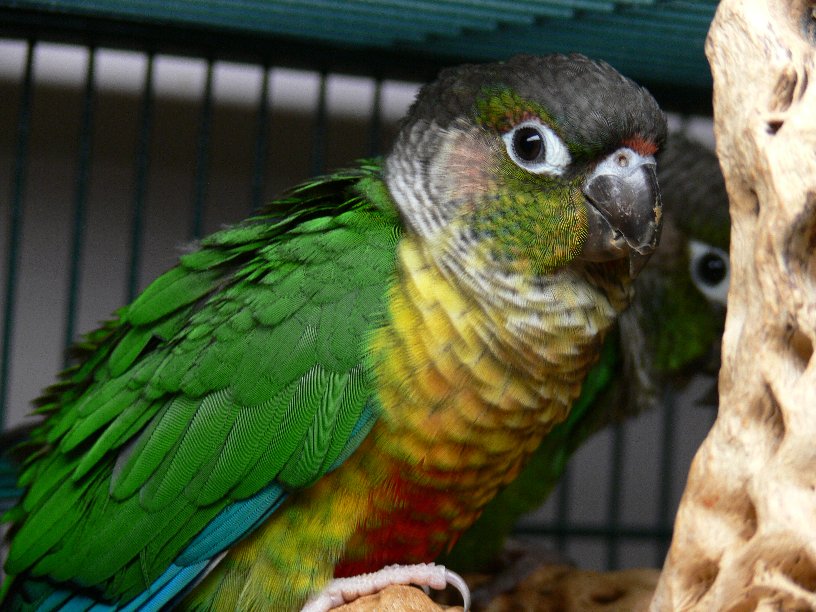
The Green-Cheeked Conure is a friendly and lovable bird that is easy to handle. Unlike other conures, these birds are particularly social and enjoy the company of humans. With their playful, curious, and intelligent nature, they can also be quite mischievous at times. Nonetheless, they are very affectionate towards their owners and have an easygoing personality. Although they are not known for their talking abilities, there are rare instances where they do learn to mimic speech. Overall, the Green-Cheeked Conure makes for a delightful companion for those seeking a friendly pet bird species.
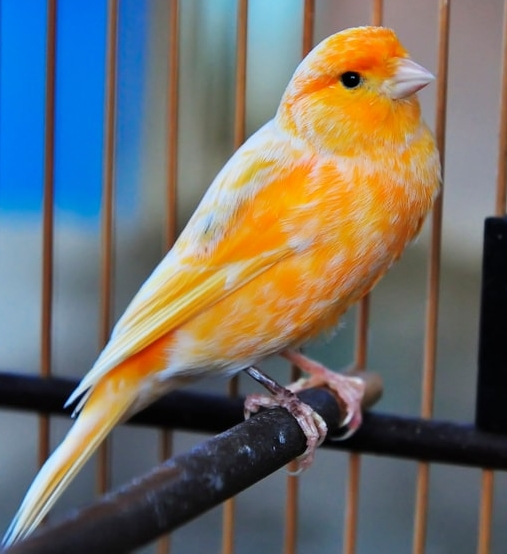
If you’re planning to keep a Canary, it’s essential to provide them with a spacious cage that’s 2 to 3 feet tall. This will give them enough room to stretch their wings and fly around. Make sure you place water bowls (one for drinking and another one for bathing) and food bowls at different heights inside the cage. Commercial pellets are an excellent source of nutrition for your Canary, but you can also give them vegetables like kale, spinach, and sweet potatoes.
Canaries don’t necessarily need other feathered companions as they are not very social birds. However, they do enjoy being in the same room as their humans and love being talked to. So, make sure to spend quality time with your canary and give them the attention they need to thrive.
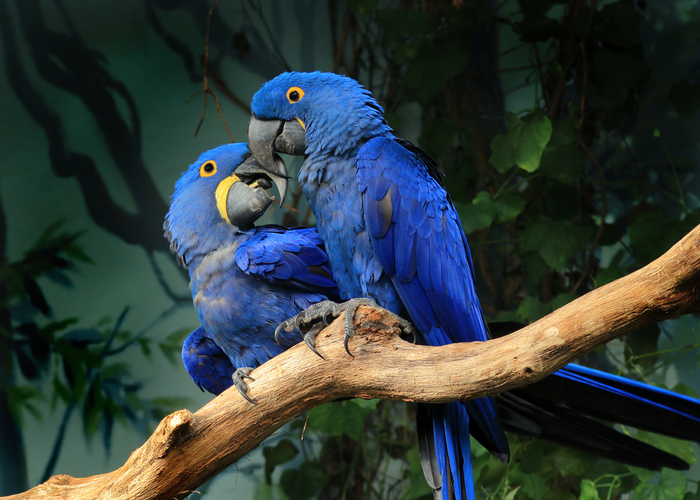
The Hyacinth macaw is a stunning bird that also happens to be the largest one you can raise. They are a social and playful species, and they love nothing more than snuggling up with their owners. However, because they grow to be quite hefty, weighing in at 42-51 ounces and measuring over 40 inches in length, you’ll need to make sure you have enough room to accommodate them comfortably. If you can provide enough space, though, these big birds will make wonderful companions as they are known for their friendly nature.
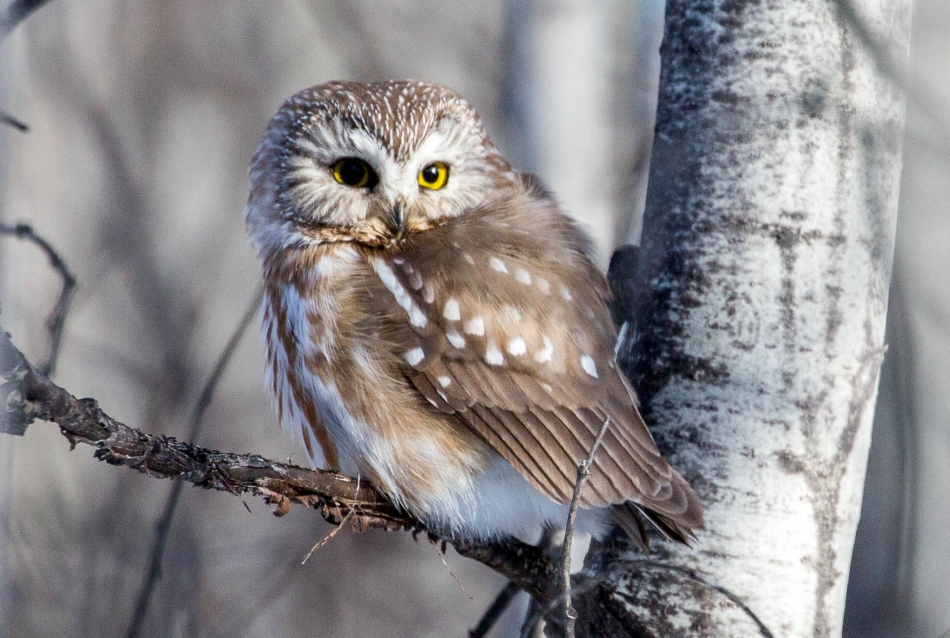
When considering what type of pet birds to raise, owls may not immediately come to mind. However, after reading this article, you might want to reconsider. While it may be difficult to find owls in some areas, if the opportunity arises, they are definitely worth raising as pets. Despite their intimidating appearance, these birds are actually very friendly and loyal, making them great companions. Many individuals who raise owls have special licenses that allow them to care for injured or reduced owls. With patience and consistent interaction and training, owls can become very loving and affectionate pets. If you’re interested in raising an owl, barn owls and snowy owls are two great options to consider.
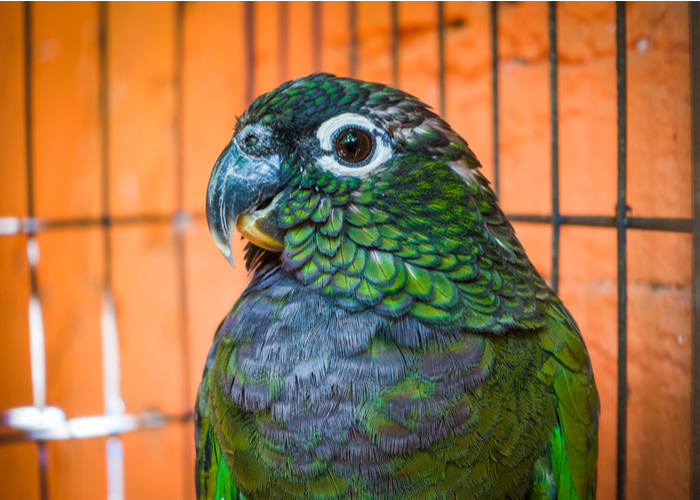
Hahn’s Macaws are not only beautiful but also known for their friendly nature, making them a great pet bird option. While macaws are often avoided due to their large size, Hahn’s Macaws are smaller, measuring only 12 to 14 inches in length. Despite their small size, these birds have a big personality and are intelligent, playful, and gentle when socialized and handled regularly. It is essential to spend time interacting with your Hahn’s Macaw as they can become depressed if not given enough social activity. However, keep in mind that they can be quite noisy too.
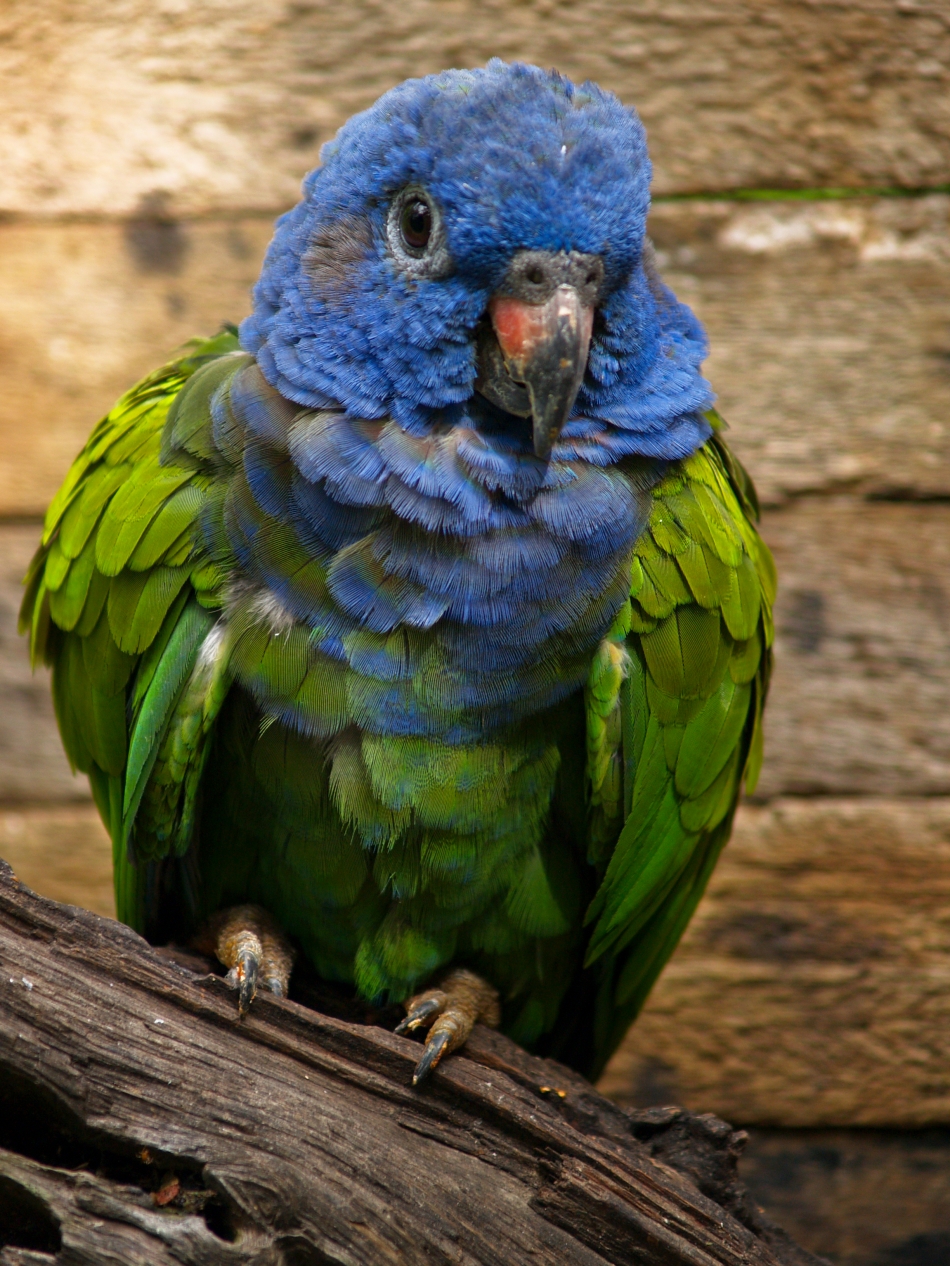
Pionus parrots are known for their friendly and sociable nature, making them an excellent choice for a long-term pet. These birds can live up to 40 years, which is longer than the average lifespan of most dogs. Typically, Pionus birds grow to be around 10 inches long and enjoy playing. They do not usually become overly attached to one person and instead bond with everyone in their household. This makes them a great pet choice for families with multiple members.
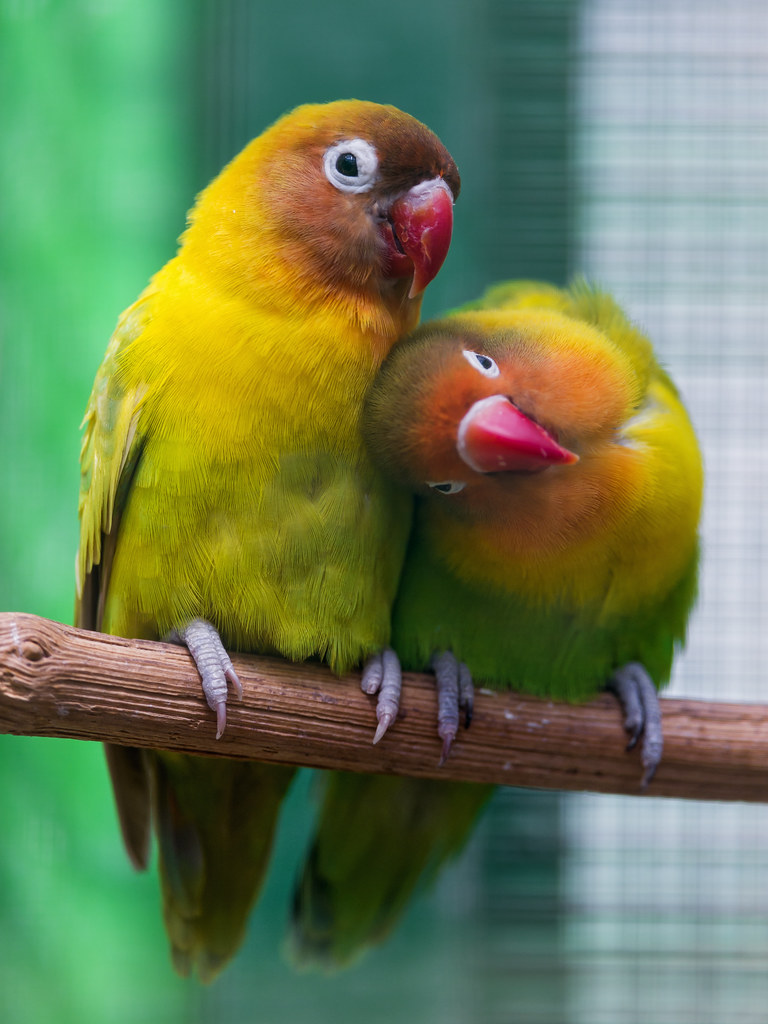
The Lovebird: The Friendliest Pet Bird You’ll Ever Meet
If you’re looking for a affectionate and sociable pet, the lovebird might just be your perfect match. As their name suggests, these birds are all about love and forming close bonds with their owners and other feathered or non-feathered companions.
One of the best things about lovebirds is their beautiful plumage, which makes them a stunning addition to any home. Plus, they’re very easy to take care of – just be sure to give them a bowl of water to bathe in a few times a week. This will not only help them keep their feathers looking neat and tidy, but also provide an opportunity for some fun playtime.
Overall, if you want a loving and low-maintenance pet, look no further than the delightful lovebird.
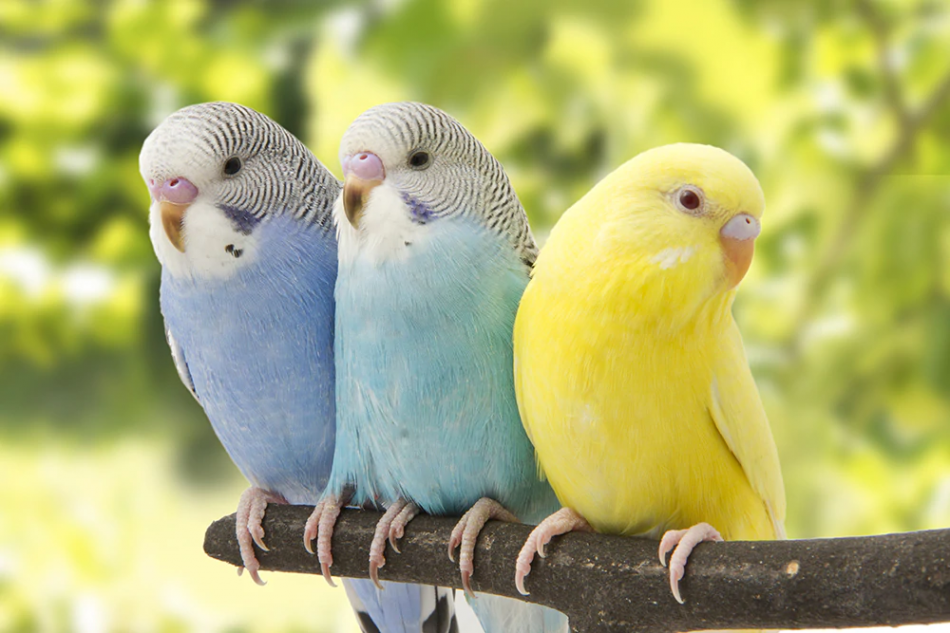
Budgerigars, also known as parakeets, are native to Australia and are a part of the larger group of small to medium sized parrot species. The word “budgerigar” comes from the aboriginal people of Australia, and “budgie” is often used as a shortened version. Providing social activities is an important aspect of caring for parakeets, who are flock creatures. If their human family members are present to hand tame and interact with them frequently, then they become a part of their flock and can form strong bonds with their human companions. However, if the human family members will be absent frequently, then it is recommended to keep the parakeet in an environment with other parakeets to prevent potential depression and mental health issues.
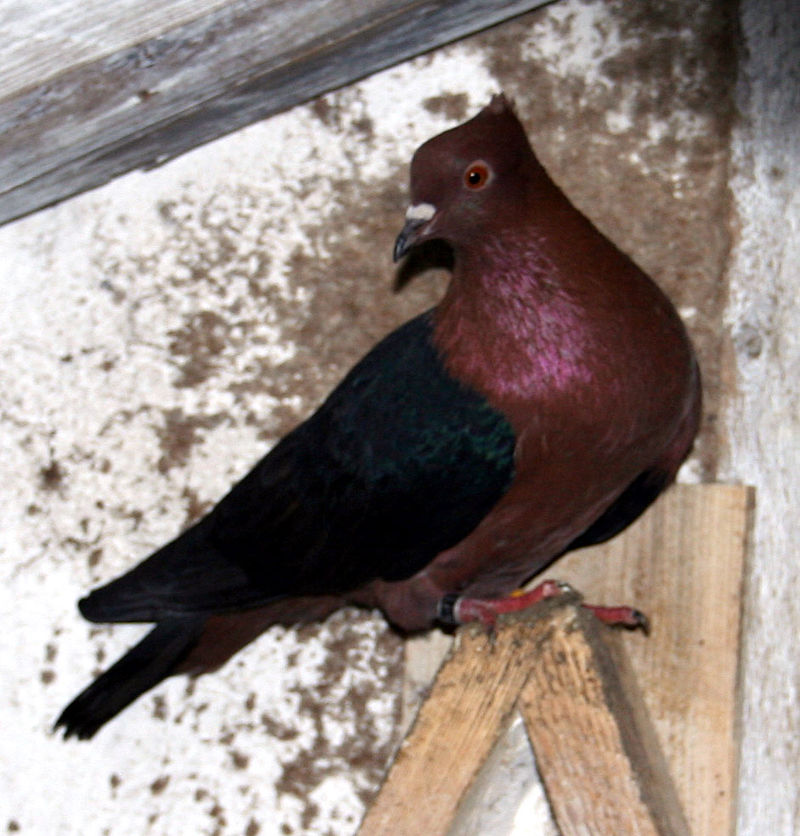
The archangel pigeon is a unique bird that has been bred selectively to achieve its distinct coloring. Its feathers have a metallic sheen, and its body is either bronze or gold in color. These birds have bright orange eyes, and their wings may come in black, white, or blue hues. They are not suited to survive in the wild as they are bred specifically as domestic pets. Archangel pigeons are commonly used in shows or as ornamental birds.
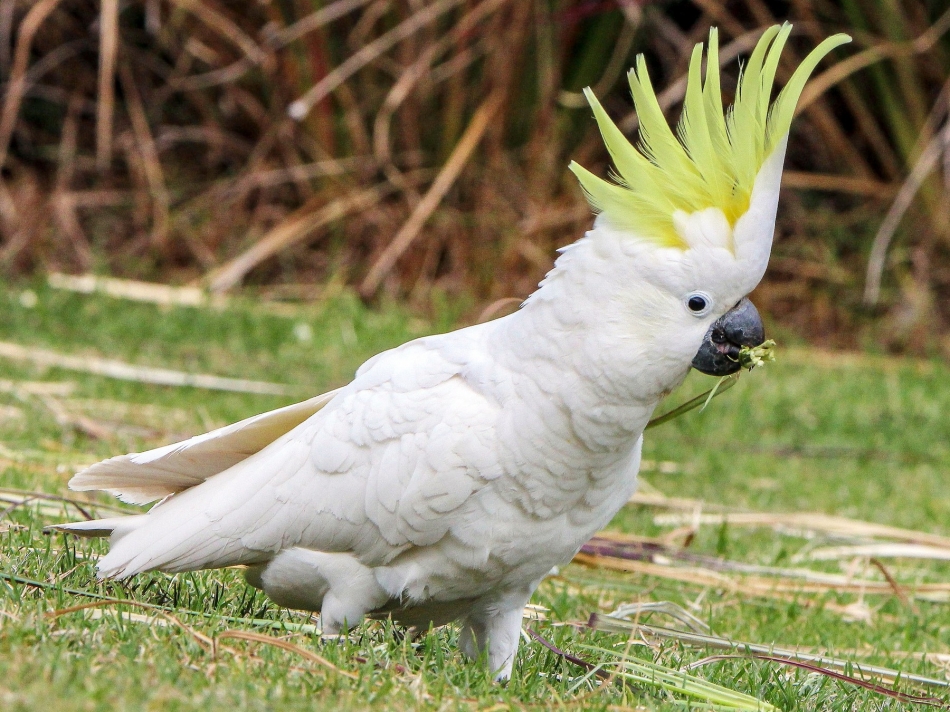
The cockatoo is a unique and fascinating animal known for its attention-grabbing nature and love of attention. These birds form close bonds with their owners and thrive in relationships with humans. However, if they do not receive enough attention, they can become depressed and exhibit distress by plucking out their feathers. To prevent this, it is important to spend at least an hour or so daily giving these birds the love and attention they crave. With proper care and attention, cockatoos can quickly become cherished members of any family. Physical characteristics of the umbrella cockatoo include primarily white plumage, pale yellow wings and tails, a large white crest, and a black beak.
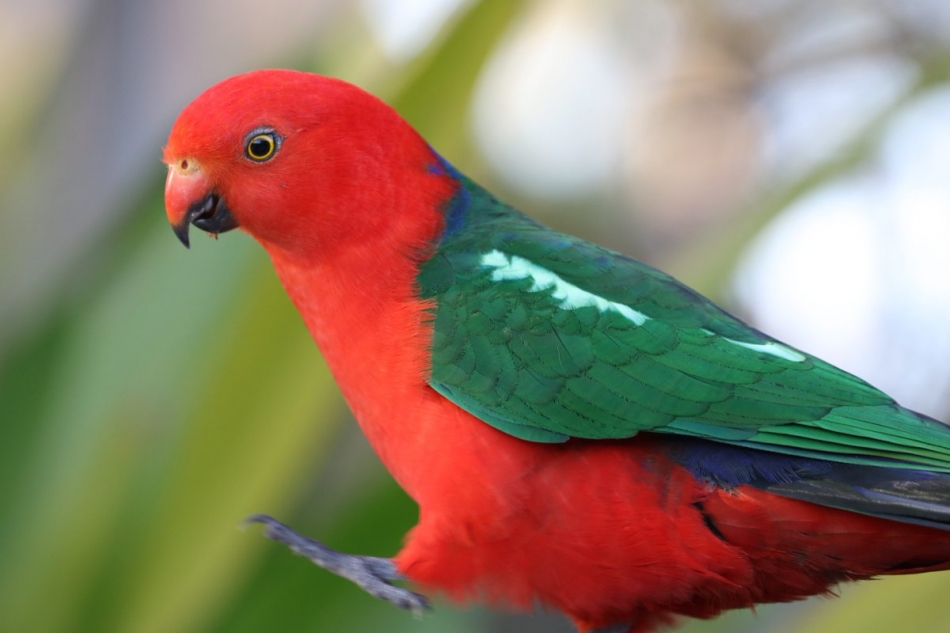
The stunning Australian king parrot is a popular choice as a pet due to its striking appearance. However, it is important to note that these birds are not particularly affectionate and do not enjoy being handled. The males are especially eye-catching with their bright red bodies, green wings, and black tails. Females, on the other hand, have a more subdued green coloring with a red belly and legs. One challenge of keeping these birds as pets is that they require ample space to move around. Confined cages will not suffice, so it is essential to have knowledgeable handlers who can provide them with the necessary room to roam.

The black palm cockatoo is a sizable type of cockatoo that has a distinctive appearance. Its feather color varies from dark grey to black, and it has deep maroon cheeks. The bird’s name comes from the feathered crest on its head, which resembles palm fronds. Those who keep them as pets should be aware that they need a lot of attention. They are social and intelligent creatures, and if they don’t receive enough care and interaction, they can become depressed and destructive. Unfortunately, these birds are now considered vulnerable in the wild due to habitat destruction and being captured for the pet trade. It’s a sad truth that their numbers have decreased drastically, although they were once abundantly available.
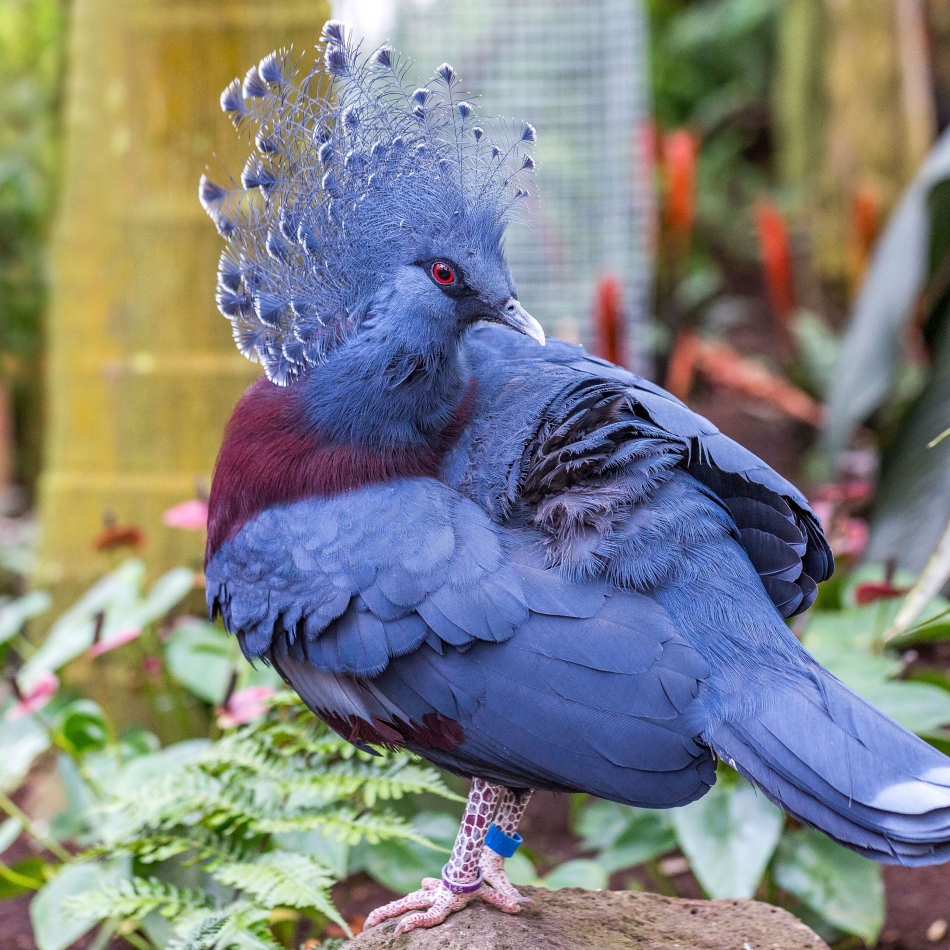
The Victoria crowned pigeon, which is the largest species of pigeon in existence, has an impressive appearance with a plume of lacy blue feathers on their head and light blue feathers with maroon on their chest. These majestic birds can weigh up to 7 pounds and spend most of their time on the ground, requiring ample space to run around and places to perch. As they are unlikely to find suitable living conditions in a household, it’s advisable to leave them to be cared for in zoos where they can thrive. Interestingly, the pigeon was named after Queen Victoria as a tribute to her majesty.
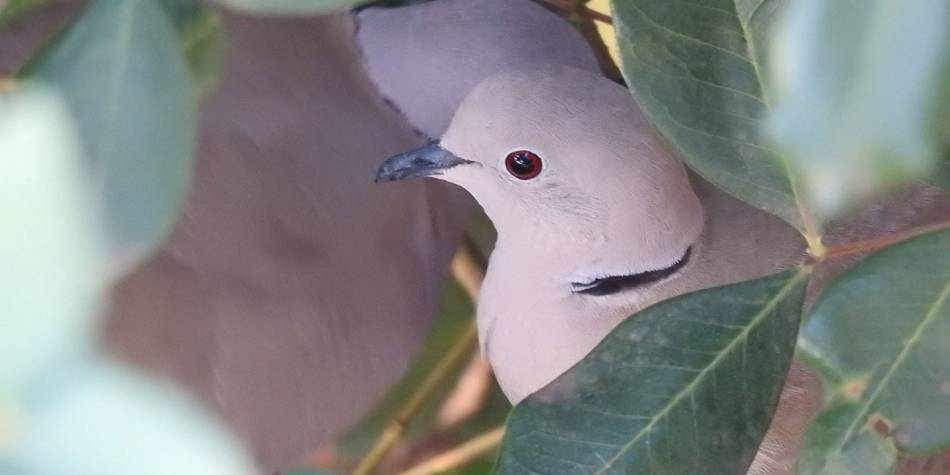
Ring-Necked Doves are not the most common choice for pet birds, as only a small percentage of bird parents own them. However, they are incredibly friendly and easy to get along with once they become accustomed to their owners. While some dove species require advanced management with large and precise environments, other species such as Ring-necked doves (Streptopelia risoria) and diamond doves (Geopelia cuneata) make great companion pets. They are perfect for those who are interested in keeping birds but are not able to devote the time necessary to care for a parrot. To keep Ring-necked Doves, it is important to provide them with a wide cage that has several perches, bells, and swings.
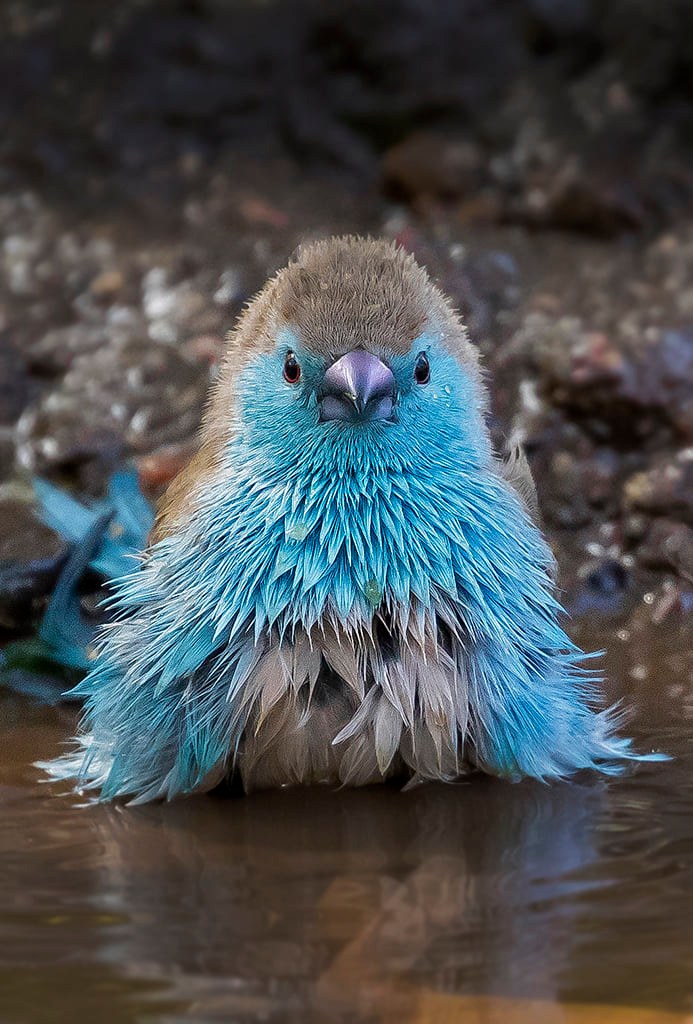
The blue waxbill, scientifically known as Uraeginthus angolensis, is a popular estrildid finch species found in Southern Africa. It goes by various names such as southern blue waxbill, blue-breasted waxbill, southern cordon-bleu, blue-cheeked cordon-bleu, blue-breasted cordon-bleu, and Angola cordon-bleu. This species is frequently kept in aviaries due to its popularity. The blue waxbill feeds primarily on grass seeds obtained from inflorescences and supplements its diet with termites and other insects. They have also been known to eat Boscia albitrunca fruit. These birds are often observed in pairs or family groups, but they can be seen in larger flocks that mingle with other estrildid finches.
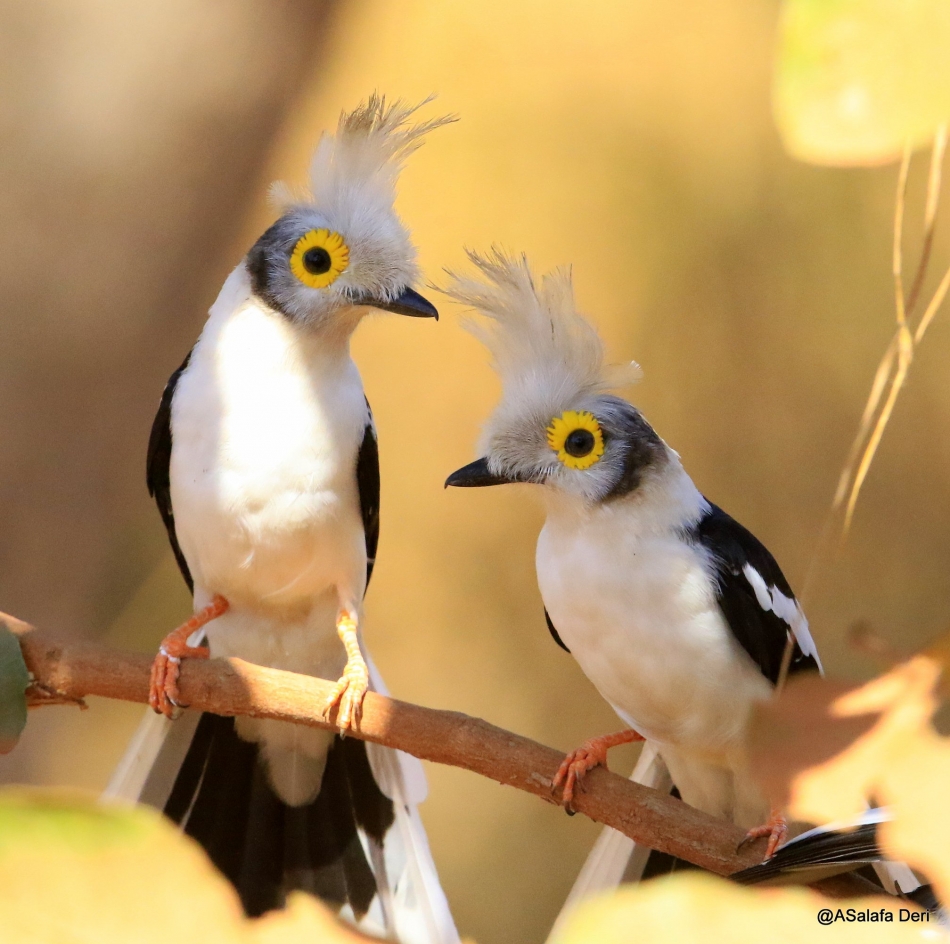
The white-crested helmetshrike, also called white helmetshrike, belongs to the Vanga family Vangidae and was previously classified under Malaconotidae. Its scientific name is Prionops plumatus. This passerine bird species can be found in various countries including Angola, Benin, Botswana, Burkina Faso, Burundi, Cameroon, Central African Republic, Chad, Democratic Republic of the Congo, Ivory Coast, Eritrea, Eswatini, Ethiopia, Gambia, Ghana, Guinea, Guinea-Bissau, Kenya, Malawi, Mali, Mauritania, Mozambique, Namibia, Niger, Nigeria, Rwanda, Senegal, Sierra Leone, Somalia, South Africa, Sudan, Tanzania, Togo, Uganda, Zambia, and Zimbabwe. Its habitat includes subtropical or tropical dry forests, dry savanna, moist savanna, and subtropical or tropical dry shrubland. The white-crested helmetshrike is known to be a social bird that moves around in small groups while foraging on the ground or among the foliage. They communicate with each other in a noisy manner as they explore their territory.
